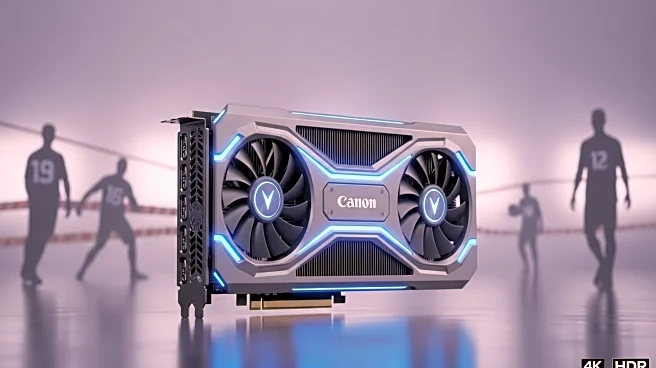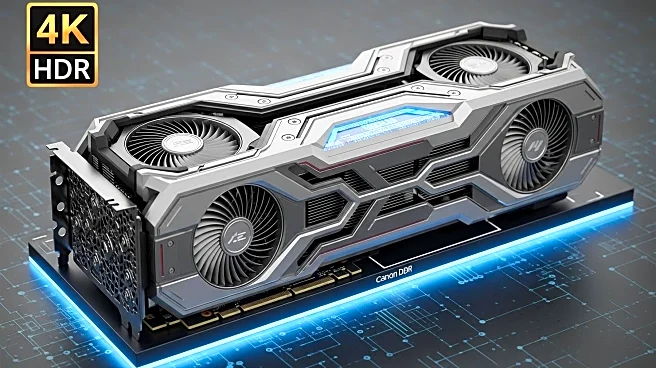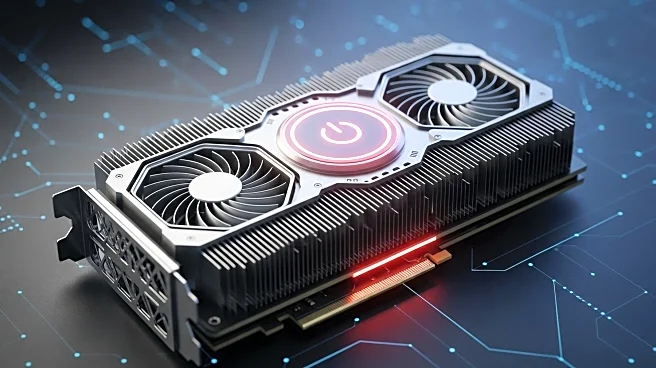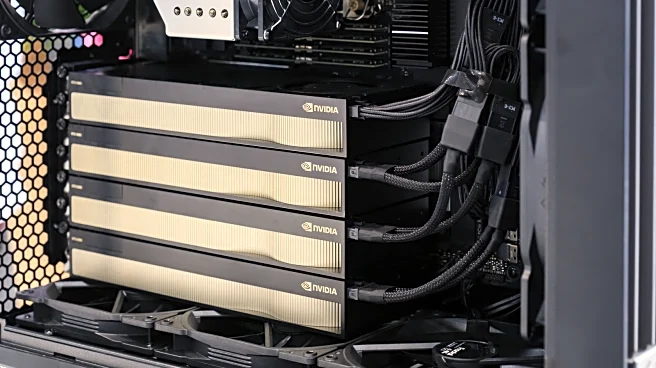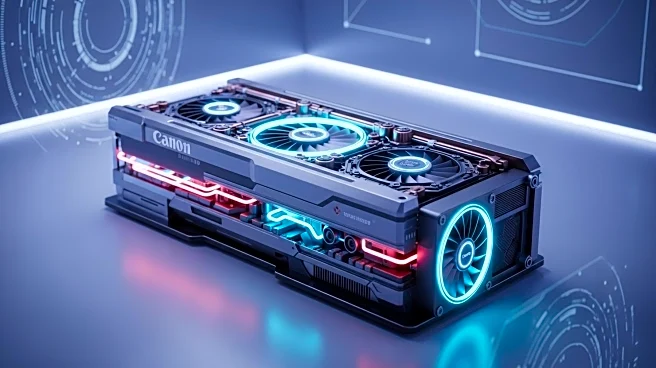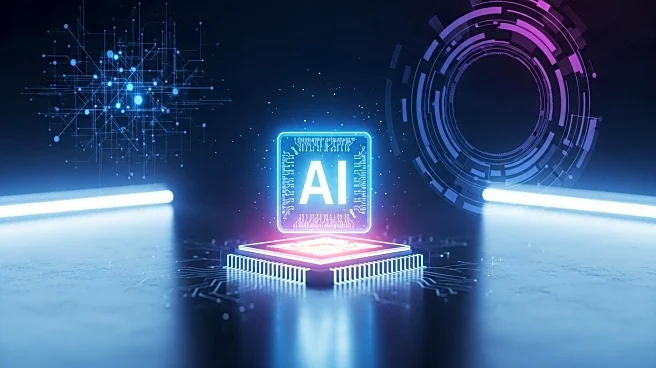What's Happening?
AMD is set to release its next-generation RDNA 5 'Radeon' gaming GPUs, which are rumored to feature a significant increase in core count, with 128 cores per compute unit. This development marks a substantial upgrade from the current RDNA 4 GPUs, which have 64 cores per compute unit. The RDNA 5 lineup is expected to include four GPU die configurations, ranging from a top-tier die with 96 compute units to an entry-level die with 12 compute units. This new architecture is anticipated to double the core count of the previous flagship GPU, Navi 31, and potentially close the performance gap with NVIDIA's RTX series. The RDNA 5 architecture is designed to improve performance in areas such as ray tracing and artificial intelligence, positioning AMD to compete more effectively in the high-end gaming market.
Why It's Important?
The introduction of AMD's RDNA 5 GPUs is significant for the gaming industry as it represents a major leap in graphics processing power. By doubling the core count of its previous flagship models, AMD aims to enhance gaming performance and compete more closely with NVIDIA, a dominant player in the market. This development could lead to more competitive pricing and innovation in the GPU market, benefiting consumers and game developers. Additionally, the improved performance in ray tracing and AI could lead to more immersive gaming experiences and drive advancements in game design and technology.
What's Next?
As AMD prepares to launch the RDNA 5 GPUs, the market will be closely watching for official announcements and performance benchmarks. The company's ability to deliver on its promises of enhanced performance and features will be critical in determining its competitive position against NVIDIA. Industry analysts and consumers will be evaluating the price-to-performance ratio of the new GPUs, which could influence purchasing decisions and market dynamics. Furthermore, AMD's success in the high-end segment could encourage further investment in research and development, potentially leading to more innovations in the future.
